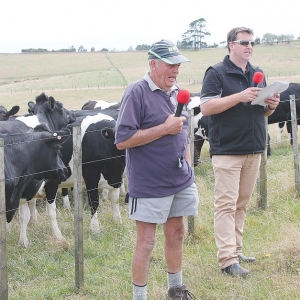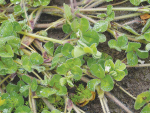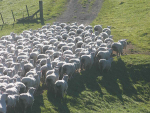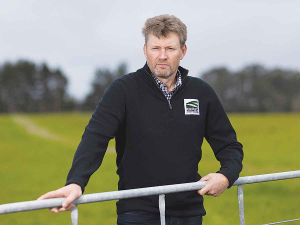It is costing dairy farmers an “awful lot of money” to have poorly grown heifers, says AgFirst consultant Gareth Baynham.
‘Manage the tail’ is the key message he gave to farmers at the conclusion of a joint DairyNZ and Beef + Lamb NZ field day at a heifer grazing focus farm in Te Arai, near Wellsford, Northland.
“Dairy farmers are getting big losses from the light animals,” he says. And there are plenty of them. An LIC analysis of heifer weights in the national database showed only 23% of animals were within 5% of their liveweight targets, based on genetics.
Baynham showed modelling of a typical Northland farm with 280 average cows and 70 replacement heifers: having 5% of heifers below liveweight targets at 22 months would cost the farm $6050 per annum; if 25% of heifers were below liveweight it could cost the farm up to $42,763.
The focus farm of graziers John and Geraldine Taylor is one of several in a national initiative to improve the way dairy heifers are grown in New Zealand.
DairyNZ’s Sarah Dirks says good gains have been made through the 6-week in-calf programme but not as much as the industry was hoping to see, so DairyNZ decided to focus on productivity, looking at heat detection, cow condition and heifers. As there are two sides to the story in a grazing relationship, it was a good move that BLNZ came on board with the heifer project as well.
Dirks says it is clear tensions can arise in the relationship between stock owners and graziers. There were perceptions on both sides that things were not particularly fair: graziers don’t feel they get paid well and they are given poor stock; the farmers say they pass the graziers good stock but they get them back in what is perceived to be poor condition.
A number of graziers gave stories about stock not turning up or stock turning up underfed or small or skinny. A Northland farmer told Dirks he was given underfed stock which he turned them around, looking great but the dairy farmer phoned to say he had found cheaper grazing somewhere else.
“That’s not fair: it’s not about which industry you are part of, it is just about treating people fairly. If we can improve communication and define expectations up front that’s a huge success for us.”
The industry target of 30% of average adult liveweight (500 kg) at 6 months (150kg) requires being on track to achieve puberty by mating, Dirks says. The 60% (330kg) at 15 months requires having two or three cycles before mating so you can improve conception rate leading into mating. The 90% (450kg) target at 22 months requires milk production, reproduction and lifetime productivity. Mature live weight is reached at 6-8 year of age. Most of the growing is in the first two years.
“Dairy farmers and graziers aren’t having conversations about what the target weights are which will depend on breed,” Dirks says.
BLNZ, LIC and DairyNZ are leading a steering group on the heifer grazing. The group is talking with Federated Farmers which has reviewed their contracts and will draft new, more specific contracts this year. Checklists and questionnaires are in progress to make sure the right questions are asked when a grazier relationship starts, more field days on focus farms are being held, and technical experts are coming together to create an industry-agreed body of knowledge on heifers.
For instance, little information is available on feeding levels for heifers, Dirks says. A contractor will put together fair pricing guidelines and the website is being updated to make information more accessible and reliable.
Jair Mandriaza-Munoz, of LIC, says analysis showed at 6 months 50% of animals were 5% below target weight. At 15 months – the all-important date for getting pregnant – 60% of heifers were 5% below target. At 22 months, 73% were 5% below target.
Three out of four heifers in New Zealand enter the herd 5% below target liveweight at calving.
That affects their performance, production, “everything”.


















